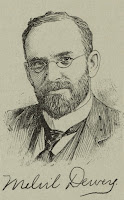Notable Learning from Digital Leadership for Libraries by CILIP

Digital Leadership for Libraries is a free, online learning course comprised of five open-access, modules created for public library workers, volunteers and apprentices. CILIP members who work outside of public libraries can also access the course. Module 1: Introduction to Digital Leadership Computational sense and its relevancy to library or information personnel ,digital leadership and key areas of digital leadership are: Vision, Knowledge, Culture, Data Links from lessons: https://www.gartner.co.uk/en/methodologies/gartner-hype-cycle http://marcyk.msu.domains/student-employee-training/learning-reference/ Further Reading Links from Module 1: https://www.jisc.ac.uk/blog/digital-leaders-are-worth-their-weight-in-gold-25-mar-2021 https://www.librariesconnected.org.uk/resource/digital-leadership-skills-overview-report https://www.cilip.org.uk/general/custom.asp?page=carnegieleadership https://www.librariesconnected.org.uk/news/new-training-programme-aims-improve-diversity-libr...

